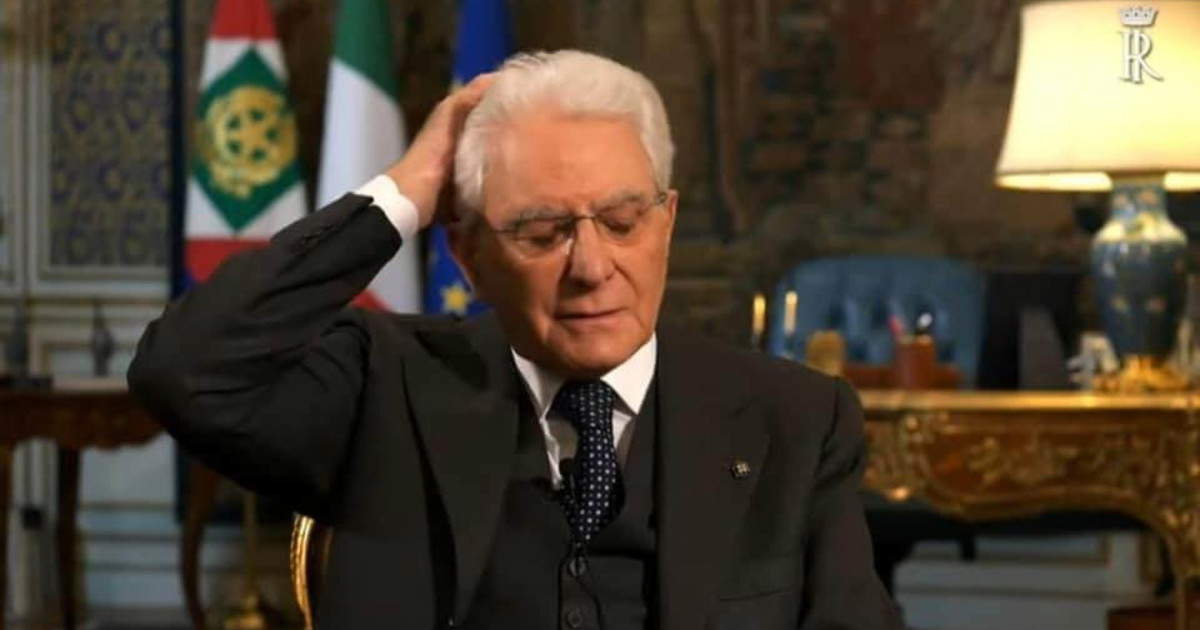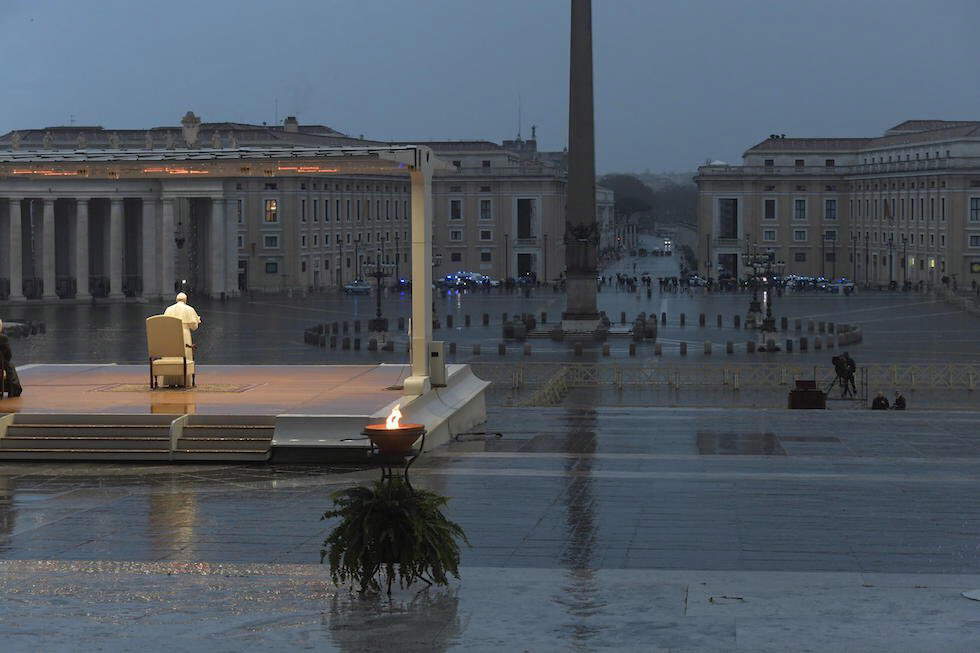Exceptional times we are living, so exceptional that on the same day the two highest personalities of our country entered our homes. In order of appearance, Pope Francis and the President of the Republic Sergio Mattarella: and if perhaps we did not hear them, it was impossible not to see them, as their images bounced around the web for hours and in all likelihood will enter (the one of the pope speaking to a deserted St. Peter’s Square for sure) the history books.
Two images that deliver us the two oldest powers in this world, often in conflict and competition with each other, the temporal and the spiritual, united in the (successful) intent to deliver a message of comfort to those who sought it and those who deserved it. If it is true that a picture is often worth a thousand words, what did we perceive from what we saw? In the solitary image of Pope Francis speaking to the deserted square at nightfall, there was all the solemnity and power of great liturgical ceremonies, and in that deserted square we felt tiny in the same way we would have felt tiny if that square had been packed.
It is no coincidence that the Church, for centuries, has exercised and maintained its spiritual power through powerful stage sets and architecture that were meant to convince the interlocutor that he or she was facing something supernatural, something divine: from the imposing Gothic cathedrals to the great eighteenth-century monuments of St. Peter’s basilica, from the spectacular Baroque and seventeenth-century buildings with its sacred theatras (one above all, Bernini’s in Santa Maria della Vittoria), its imposing catafalques (that of Paul V, that of Gregory XV) its scenographic architectures, all the way to the pontificate of Pius IX and its neo-Renaissance renovatio , which, while rejecting the peaks of the Baroque, posed the problem of re-establishing Catholic faith, religion and ideology in one of the worst moments of crisis the pontificate had ever faced in the course of history. A centuries-long figurative imagery that was recently effectively summarized by Sorrentino’s young pope entering seated in the gestatorial chair in the Sistine Chapel.
 |
| Sergio Mattarella during his speech |
 |
| Pope Francis during the Urbi et Orbi blessing on March 27 in the deserted St. Peter’s Square |
In yesterday afternoon’s square, we saw a pope engaged in an activity that is as simple as it is equally impossible for any other human being, that of speaking to a deserted square: yesterday afternoon, in that simple, stupendous image, the pope reminded us (or at least reminded those who want to believe it), without even the need to listen to him, of his connection with God.
So different, on the other hand, was the image of the president of the Republic, who although filmed inside the usual gilded place and clad in brocaded fabrics, as befits a president, had never before been seen so earthly, close and similar to us. Indeed, there was no need to listen to the off-air audio to realize that the president, these days, could not, like the rest of us, go to the hairdresser (except perhaps for Barbara D’Urso), and that tie worn so crooked reminded us somehow of the distraction and carelessness with which we too these days dress before going to the dinner table or prepare (for those who can) for yet another smart working session.
We liked Mattarella’s simplicity because it was unstudied and unrehearsed: it was a normal and spontaneous simplicity, in tune with the times we are living in. A simplicity that we have been fortunate to see in the past with Pertini, portrayed playing scientific scopone with soccer players returning from the World Cup in Spain, or with Ciampi moved at Ciampino airport as with outstretched arms he embraced the coffins of fallen Italian soldiers in Iraq. What we saw yesterday are two images that represent both the quintessence and the summa of two realities and two powers that yesterday, with their respective languages, came together to speak to their worlds, to make us feel less alone. And perhaps they succeeded in their intent.
Warning: the translation into English of the original Italian article was created using automatic tools. We undertake to review all articles, but we do not guarantee the total absence of inaccuracies in the translation due to the program. You can find the original by clicking on the ITA button. If you find any mistake,please contact us.